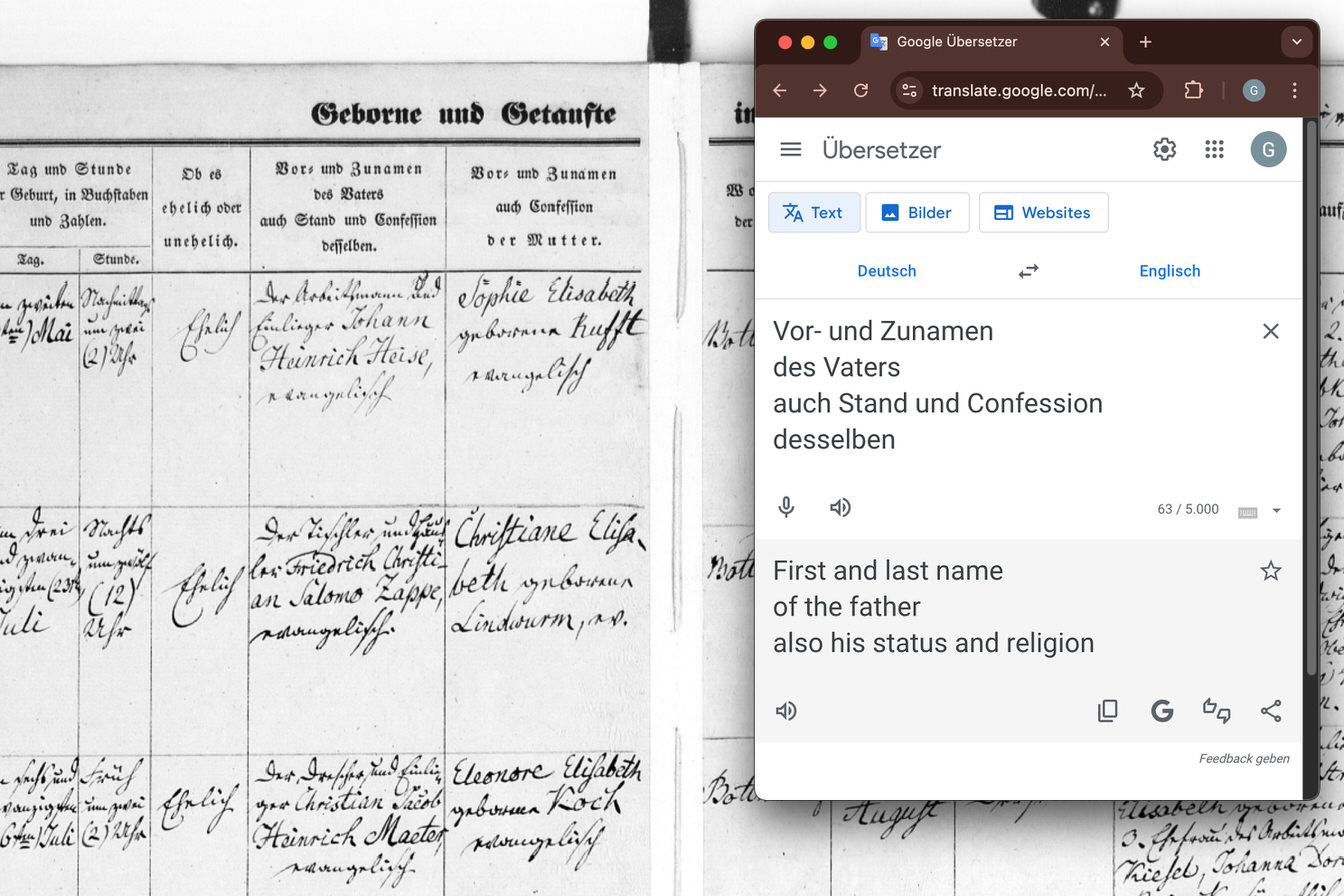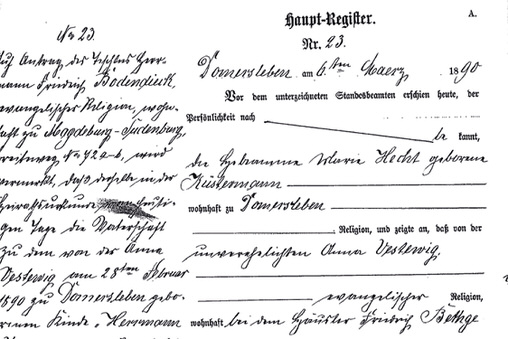How to Find Your German Ancestors Without Speaking German
Published by Gunar Bodendiek. Last updated on October 14, 2025.

Many people with German roots hesitate to start researching their family history because they don’t speak German. The good news? You don’t need to be fluent to uncover your ancestors’ stories. With today’s translation tools, online resources, and a few smart strategies, you can make real progress — even if you don’t know a single German word.
1. Use Bilingual Genealogy Websites
Many of the major genealogy platforms, including FamilySearch, Ancestry, and MyHeritage, offer multilingual interfaces. You can switch the language to English while still accessing German records. Their search tools recognize both English and German place names and often include auto-translated record descriptions.
2. Translate Key Terms Once — and Reuse Them
You’ll encounter the same words repeatedly in old documents: Geburt (birth), Heirat (marriage), Tod (death), Vater (father), Mutter (mother). Create your own mini glossary or print one from FamilySearch’s German Word List. After a while, you’ll recognize these terms at a glance — no translation app needed.
3. Let Technology Do the Heavy Lifting
Online translation tools are getting remarkably good at handling both typed and handwritten German text. Try:
- Google Translate for quick meanings and phrases
- DeepL for more natural, context-accurate translations
- Optical Character Recognition (OCR) tools for deciphering scanned church book pages or old letters
Just remember that older scripts such as Kurrent or Sütterlin aren’t recognized by normal OCR — they require specialized transcription (see below).
4. Learn to Recognize Old Handwriting Styles
Most 18th- and 19th-century German records were written in scripts unfamiliar to modern readers. Even native Germans often struggle with them. If you’re curious to learn, start with a basic Kurrent or Sütterlin alphabet chart and practice with sample words. Otherwise, consider hiring a professional transcriptionist who specializes in German church or civil records.
5. Use Online Forums and Facebook Groups
Thousands of genealogy enthusiasts around the world are eager to help. Communities such as German Genealogy on Facebook or the r/Genealogy subreddit often assist with translations, handwriting, and place identification — for free. Post a clear photo of the record and mention what you already know; you’ll often get answers within hours.
6. Pay Attention to Place Names
Even if you can’t read every word, identifying a town name can open new doors. Use the Meyers Gazetteer to look up historical German place names, then locate their modern equivalents on a map. Knowing the right parish or district is often more valuable than understanding the full sentence in a record.
7. Don’t Get Discouraged by Language Barriers
Genealogy isn’t about perfection — it’s about persistence. Many English-speaking researchers successfully trace their German ancestry by combining online databases, translation tools, and expert help when needed. Every new record you find brings you one step closer to your family’s story.
Need Help Translating or Interpreting Records?
Understanding handwritten German documents can be challenging, especially if they’re written in older scripts or dialects. That’s where I come in. At My German Origin, I specialize in researching, transcribing, and translating historical German records for English-speaking clients worldwide.
I offer a free feasibility check to evaluate your documents and determine what information can be extracted from them.
Contact me today and start discovering your German ancestors — no German required.



